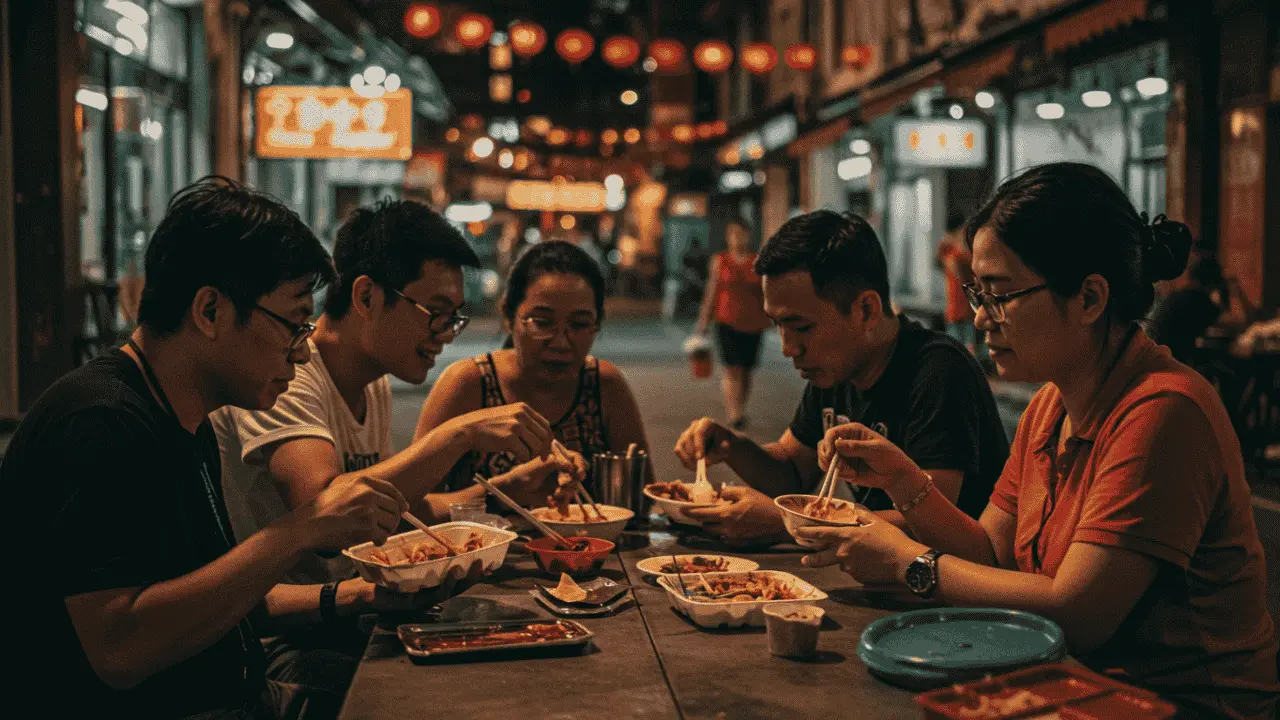Understanding Chinatown Hawker Leftovers Consumption
In bustling city districts where local flavors dominate, food culture thrives not only through fresh meals but also through what remains after peak hours. One such concept gaining quiet traction is Chinatown hawker leftovers consumption—a practice where leftover but edible food from hawker stalls is collected and distributed, reducing waste and feeding people who need it.
This idea carries deep significance, blending cultural values, sustainability, and social support into a single quiet movement.
What Is Chinatown Hawker Leftovers Consumption?
At its essence, this refers to the act of gathering unsold but still consumable food from hawker vendors in Chinatown areas. These foods, often prepared in batches throughout the day, are sometimes left over after business slows. Instead of being discarded, some of this food is redirected to individuals, groups, or systems that aim to reduce waste and hunger.
This concept is not about scavenging or food spoilage. It’s about recognizing the value in food that remains untouched, safe to eat, and potentially nourishing for someone else.
Why Leftovers Matter in Chinatown Settings
Chinatowns around the world are known for their lively food scenes—noodles frying in woks, soups simmering in large pots, dumplings being folded at lightning speed. Hawker stalls cater to tourists, locals, office workers, and night owls alike. The fast pace, the need to be ready for crowds, and the unpredictability of daily foot traffic often lead vendors to over-prepare.
By evening or closing time, portions of rice, meats, vegetables, and soups may remain. While perfectly fine to eat, these leftovers cannot be sold the next day due to food safety regulations and customer expectations. That’s where consumption initiatives step in—ensuring this food does not go to waste.
The Cultural Background and Social Relevance
In many traditional Asian communities, wasting food is frowned upon. “Every grain of rice counts,” elders often say. This mentality has shaped the way food is prepared and consumed. However, modern business models have shifted priorities toward profit, speed, and hygiene codes.
Chinatown hawker leftovers consumption blends the old value of not wasting with the new need to manage food waste consciously. By redirecting leftovers to communities who can use them—whether low-income workers, students, or elderly residents—Chinatown stays true to its cultural roots while meeting current needs.
Who Participates in This Practice?
There isn’t one standard system behind this movement. It ranges from individual volunteers to organized groups. Some of the common participants include:
- Volunteers: People who visit stalls at closing time to ask for unsold food and redistribute it.
- Stall Owners: Vendors willing to contribute leftovers instead of throwing them away.
- Local Organizations: Non-profits and informal groups collecting, sorting, and distributing food.
- App Creators: Digital platforms facilitating communication between hawkers and pickup partners.
Each group plays a unique role in enabling food to move from stall to stomach without being discarded.
How the Collection Process Works
The process of collecting Chinatown hawker leftovers typically follows a few key steps:
- Identification: Volunteers or collectors identify which stalls have excess food consistently.
- Coordination: A routine is established—either through visits, phone calls, or mobile apps.
- Packaging: Food is packed safely, either by the vendor or by the collector, using clean containers.
- Distribution: The collected food is taken to nearby shelters, neighborhoods, or locations where people gather.
- Consumption: Those in need receive the meals, often on the same night.
Timeliness is critical. Since food safety is a concern, the handoff between vendor and recipient happens fast, sometimes within the hour after the stall closes.
Challenges Faced by This Initiative
While the idea sounds noble and efficient, there are obstacles in the way:
- Hygiene Regulations: Some local governments restrict redistribution of unsold food due to health risks.
- Stall Owner Hesitation: Not all hawkers are willing to give away food, either due to pride, policy, or practicality.
- Storage Issues: Without access to cold storage or reheating facilities, some food cannot be kept safely.
- Lack of Organization: In many places, this practice remains informal, untracked, and sporadic.
These hurdles often make it difficult for the practice to scale or gain formal recognition.
Small Wins That Make a Big Impact
Even when done on a small scale, chinatown hawker leftovers consumption can have meaningful effects:
- Reduces food waste: Prevents good meals from ending up in landfills.
- Feeds the needy: Helps the food-insecure population in urban neighborhoods.
- Builds community: Encourages cooperation between strangers for the common good.
- Saves money: Those who receive the food can save on daily meals, redirecting funds to other needs.
It’s a quiet form of care, a practice that isn’t always seen but leaves a trace of goodness wherever it operates.
The Role of Technology
While most of the process remains manual, digital tools are slowly making their way into the picture. Apps that connect food donors with collectors are emerging. These tools:
- Allow stall owners to list available food before closing.
- Help volunteers plan efficient pickup routes.
- Track quantities and locations for impact analysis.
Even simple chat groups can streamline communication and create a stronger network.
Inspiring a Broader Movement
What happens in Chinatown doesn’t have to stay in Chinatown. The concept can inspire similar efforts in other food-dense neighborhoods—Indian bazaars, Middle Eastern souks, or Latino street markets. The principles are the same: save what can be saved, give where it’s needed.
By sharing stories and successes, others may be encouraged to start their own versions, adapting to their local cultural and social dynamics.
Practical Ways You Can Contribute
If you’re reading about Chinatown hawker leftovers consumption and wondering how to get involved, here are a few simple ways:
- Talk to local vendors: Ask if they ever have leftover food and would be open to donating it.
- Join or start a local group: Find others who care and organize safe pickup routines.
- Share knowledge: Let others know that this practice exists and can be helpful.
- Support with supplies: Provide food-safe containers, gloves, or transport assistance.
Even a small gesture—like offering to carry a few boxes—can support the overall effort.
Looking Toward the Future
The goal of Chinatown hawker leftovers consumption is not just about redistributing food. It’s about changing our mindset. It invites us to see value in what we usually ignore. It encourages communities to work together with respect and compassion.
If supported properly, this practice could become a recognized part of urban food systems. Perhaps in the near future, what is leftover won’t be wasted—but welcomed.
Conclusion
Chinatown hawker leftovers consumption might seem like a humble effort, but its impact can be wide and lasting. It preserves food, upholds tradition, builds community, and promotes sustainability. More importantly, it invites people to reimagine waste—not as trash, but as a chance to nourish someone else.
With more awareness, support, and care, this small act of kindness could one day become a common urban ritual—a quiet bridge between abundance and need.






